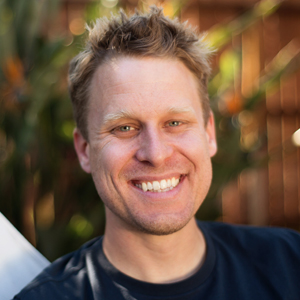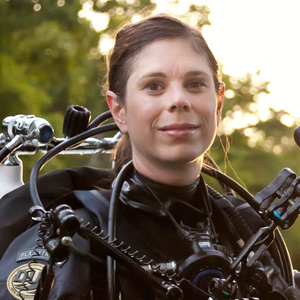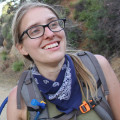California Man Buys an Entire Cow and Feeds His Family for a Year
This is a quest case study. (Read others or nominate yourself.)
Sometimes the best part of a quest is when you wind up somewhere you never would have expected. For Jared Stone, he didn’t even think he’d be on top of Mt. Whitney because he bought a cow to feed his family.
Here’s his story:
A few years ago, I bought an entire cow.
One Saturday afternoon, I was watching a food show on TV. Being a television professional (I’m a producer), I have a pretty nice setup—1080p, high refresh rate, lots of HDMI-ins. I know a fair bit about both television as an industry, and televisions in particular as specific pieces of technology. That afternoon, it occurred to me that I knew more about the television on my wall than the food that goes into my body—the stuff that actually becomes “me.”

And I thought that was wrong. Further, I thought it was ridiculous. Food is so basic, so fundamental to the condition of being alive, that I should certainly know more about it than I did about the gizmo that lets me watch American Gladiators.
So, naturally, I decided to buy a whole cow and cook the entire thing.
Tell us a little about the cow you purchased.
He was actually a steer—a type of male cow typically raised for beef. Most cattle in in the United States are raised on a diet of corn or other grains. Except, cattle aren’t really designed to eat corn. They’re designed to eat grass. But a diet rich in corn makes the animal grow faster, so corn is what they get.

This is where it gets a little squicky for the squeamish. Eating corn makes the cattle sick, usually with a condition called ‘acidosis,’ which is a lot like bovine heartburn. And being sick makes them stop eating (negating the effect of feeding them corn). To combat acidosis, most cattle are habitually treated with antibiotics. In fact, somewhere around 80% of the antibiotics used in the U.S. are used on livestock. This contributes mightily to the development of antibiotic-resistant bacteria (like e. coli) that can make people sick.
By contrast, my steer was raised eating the lawn. Purely grass fed, and part of an ecologically-minded production system that raises crops by mimicking nature. The cattle ate the grass growing between the trees of an olive orchard, making for happier cattle, better beef, and even better olives.
How did you deal with a low point during The Year of the Cow?
I didn’t take on this project to improve my health. In fact, I hadn’t really considered my health as a factor at all in this experiment. So when, a few months in, I learned that my fasting blood sugar was high, I was surprised. High fasting blood sugar can be influenced by diet. My question, then, was should I reconsider this beef project?

After a little research, however, I learned that eating beef wasn’t the problem. In fact, the high-quality grass fed steer in my freezer was probably the best and healthiest food in my diet. It was everything else I was eating that was the problem. So I took action. I cut out all sugar and foods with added sugar, which meant just about anything in a box or a bag. I said goodbye to all cereal grains, which included breads, pastas and filler foods built on a grain foundation. Cookies, candy, and other crap—out.
In their place, I ate more vegetables than you’d see at a vegan potluck, in addition to my lovely grass fed beef. And I stopped worrying about fat found in a natural context, like in meats or raw or cultured dairy. I cooked in butter, not margarine. I relied on good fats, like in olive oil and coconuts. Fat is flavor. Fat became my friend.
As a result of eating whole foods and eschewing garbage, I dropped about twenty pounds I had no business carrying around with me.
At my next doctor’s visit, my fasting blood sugar was normal.
And I’m pretty sure I could beat my doctor in a foot race.
What surprised you during your beef project?
Deliciousness resides in unexpected places. I knew I’d enjoy the beautiful rib eyes and picture perfect filet mignons that come from a gorgeous grass fed steer. Through the course of the project, I got really good at braising the tough bits that come off the front and back of the animal.
However, I did not expect that the tongue would provide arguably my favorite meal of them all—braised for hours and served as lengua tacos with a homemade tomatillo salsa.

Or that raw heart, served in a tartare with garlic and capers, could surprise my wife and I with the depth of its flavors.
Or that lowly bone marrow would yield such earth-shatteringly delicious dishes, adding a meaty luxuriance to whatever dishes it accompanied.
Or that those same bones, roasted and simmered with a mirepoix and aromatics for the better part of a weekend could yield an incredible stock that improves every other dish that includes it.
What’s more, there are cuts of beef that never even make it into a grocery store, because butchers tend to take them home for themselves. The hanger steak is one such piece, rarely seen in a meat case, but it’s the go-to for French restaurants for steak frites.
The skirt rarely pops up in supermarkets, but its Spanish name, fajita, belies its status as the origin of the dish of the same name.
Sirloin tip roasts, bewildering with the non-specific adjectives in their name, make the best open-fire kebabs on the planet.
Steaks are lovely, at least for some of us. But beyond the familiar and the well-known, there is magic.
What did you learn about yourself while exploring “the food that becomes you?”
My stated goal was to make the most out of every part of the animal that I possibly could. The obvious next question, then, is what does that mean? How can I tell if I’m making the most out of every part of the animal?
The first part of that challenge was clearly culinary. Looking at, say, a chuck roast, I would try to cook it in a way that brought out the best aspects of that particular cut. Put differently, I asked, “how can I make the ‘chuck roast-iest’ chuck roast that ever was?”
As the project continued, however, I realized there was a second part to that stated goal. But this second part was a bit more metaphysical. If I take the chemical energy imparted to me by that chuck roast, and then use that energy to watch reruns of The Price is Right, am I making the best use of that animal that I possibly can? If I squander that energy doing something banal or meaningless, have I really met my stated goal?

I decided that making the most of a meal didn’t end with digestion. I tried to use that chemical energy to live a grander life. I started running again, something I’d once loved but had stopped doing. I began exploring more, ranging around Los Angeles in areas both urban and rural, simply for the sake of curiosity. I started saying yes to challenges I might have passed up earlier, because they were too hard or I was too tired. When a dear friend of mine, who invited me to join him on a trek to the top of Mt. Whitney (the highest peak in the continental U.S.), I said yes.
So, in asking how I could make the most of every part of this animal, I wound up asking how I could make the most of my own life. Which isn’t at all where I expected this quest to take me.
What advice do you have for someone while they ponder embarking on their own quest?
In any endeavor, there are always valid, persuasive reasons not to proceed.
When I considered buying a cow, I had plenty of those reasons. It’s too expensive. The ranch is too far away. I’m not a good enough cook.

If you’re looking for reasons not to embark on a great adventure, you’ll always find them.
But that isn’t the point.
The great act of bravery isn’t heeding to well-reasoned caution. It’s accessing the risks and rewards of the potential endeavor and choosing to embark anyway. Some of those risks can be eliminated with planning, wise choices, or sheer endurance. Some of them are mirages, and never really existed in the first place.
There are many well-traveled paths to mediocrity. If you think you can avoid one of them—if you think you can carve a new path, make a new road, find another trail over the horizon—you should take it.
What’s next for you?
My book, The Year of the Cow, is coming out in paperback. And I’m still enjoying making the most of of my own life… which includes another quest.
Keep up to date on Jared’s adventures at Year of the Cow, or find them on Twitter @yotcjared.
###







